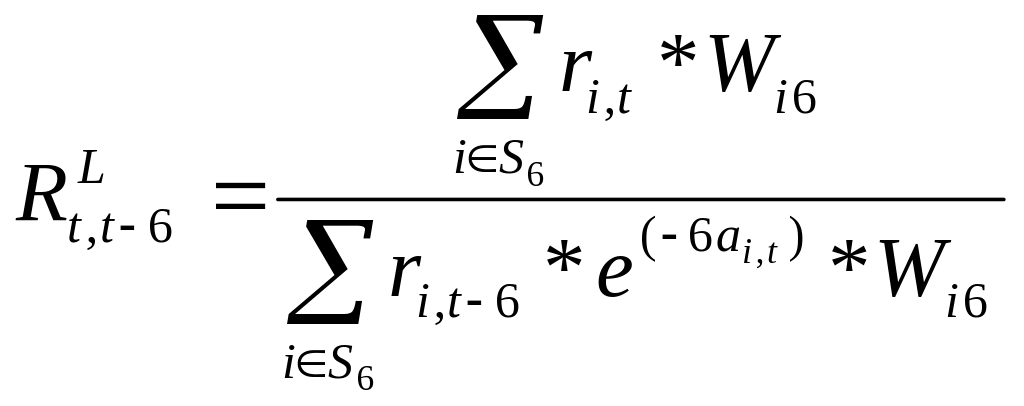OMB Support 2006 (1220-0163) rev1106 part b
OMB Support 2006 (1220-0163) rev1106 part b.doc
Consumer Price Index (CPI) Housing Survey (CADC)
OMB: 1220-0163
SUPPORTING STATEMENT
Consumer Price Index Housing
B. COLLECTION OF INFORMATION EMPLOYING STATISTICAL METHODS
Technical details of the sample design and estimation procedures of the Consumer Price Index are provided in Chapter 17 of the BLS Handbook of Methods, as well as "Redesigning the Consumer Price Index Area Sample" by Johnson, Shoemaker and Rhee, from the 2002 ASA Proceedings. In addition, during the period covered by this package, the number of geographic areas or Primary Sample Units (PSUs) will be reduced to 75 due to budget constraints. Even though the number of PSUs has been reduced, the plans are to increase the samples in the remaining 75 PSUs. We will sample 10,000 segments as before and we plan to achieve a sample of 50,000 renters. This PSU sample reduction may require adjustments to current weighting and variance estimation procedures; details of these changes are the subject of current BLS research.
1. Universe and Respondent Selection
The universe for the CPI Housing Survey consists of all urban rental-housing units. The number of year-round rental housing units in the potential respondent universe is approximately 37 million units.* These units are distributed:
Renters 33,604,000
Vacant 3,579,000
* Source: American Housing Survey for the United States: 2003, September 2004, p. 1.
The rent index measures changes in rents paid by tenants and received by landlords adjusted for changes in quality. The owners’ equivalent rent index (OER) measures the change in the implicit rent for owner-occupied housing. The implicit rent is the amount the homeowner would pay to rent, or earn from renting his/her home in a competitive market. It is for the construction of these indexes that a sample is selected and information gathered.
2.a. Description of Sampling Methodology
A multi-stage sampling process is used in the CPI. For Housing the main steps are: (1) the sampling of geographic areas (segments); (2) configuration and weighting of selected segments; (3) the purchase of coded addresses for selected segments; (4) the elimination of addresses with a very high probability of being owners and addresses that can be identified as commercial (see Attachment VI); (5) the sampling of specific addresses in the segments; (6) the mail prescreening of selected addresses by renter tenure; and (7)the telephone/personal visit screening and initiation of eligible addresses from which rent prices will be followed over time.
2.b. Description of Estimation Methodology
The CPI-U and CPI-W are defined as fixed quantity price indexes, and are the ratio of the cost of purchasing a set of items of constant quality and constant quantity in two different time periods. The published CPI for the Rent and Owners’ Equivalent Rent (OER) strata use a Laspeyres estimator.
The
Laspeyres index,
![]() ,
where t is the comparison period for which a new index is to be
calculated and "0" the reference period, can be denoted by:
,
where t is the comparison period for which a new index is to be
calculated and "0" the reference period, can be denoted by:

where:
![]() is the price for the ith item in comparison period t,
is the price for the ith item in comparison period t,
![]() is the price for the ith item in reference period 0,
is the price for the ith item in reference period 0,
![]() is the quantity of the ith item consumed in the reference period 0.
is the quantity of the ith item consumed in the reference period 0.
The indexes for the Rent and OER strata are specifically calculated as follows:
Let
![]() be the set of
rental units interviewed in the Housing survey in time t in a market
basket with valid comparable rents in both time t and in time t-6.
Vacant units that were previously renter occupied are also included
in
be the set of
rental units interviewed in the Housing survey in time t in a market
basket with valid comparable rents in both time t and in time t-6.
Vacant units that were previously renter occupied are also included
in
![]() and have current (t) and previous (t-6) month's rents assigned using
a vacancy imputation process. Let the rent for rental unit i in time
t be
and have current (t) and previous (t-6) month's rents assigned using
a vacancy imputation process. Let the rent for rental unit i in time
t be
![]() and let
and let
![]() be a factor that adjusts for the estimated small loss in quality due
to the aging it experienced between t-1 and t. The 6-month estimate
of rent change is calculated by:
be a factor that adjusts for the estimated small loss in quality due
to the aging it experienced between t-1 and t. The 6-month estimate
of rent change is calculated by:

Where:
![]() is
the renter unit's inverse probability of selection adjusted for
nonresponse.
is
the renter unit's inverse probability of selection adjusted for
nonresponse.
Using
![]() and the index for the previous month,
and the index for the previous month,
![]() ,
the BLS computes the current month's rent index,
,
the BLS computes the current month's rent index,
![]() ,
as follows:
,
as follows:
![]()
The final Rent and OER indexes for month, t, for each market basket are last month's index times the sixth root of the six-month relative.
The rents for renters are obtained directly. The basic weights for Rent and OER were computed with the initiation of the sample design.
2.c. Degree of Accuracy Required
The statute mandating the CPI does not specify a required precision or accuracy for the index. However, the BLS does provide measures of the standard error for the All U. S. CPI (CPI-U) and for the Northeast, Midwest, South and West Regions CPI (CPI-U). The most recent standard error data can be viewed at http://www.bls.gov/cpi/cpivar2005.pdf.
The BLS also requires that the precision of the CPI be maximized given the total cost constraint imposed by the authorized spending level. The allocation of the Rent sample was optimized given a fixed cost constraint with the criterion that the variance of the Rent Index and the Owners' Equivalent Rent index be approximately equal.
2.d. Special Sampling Procedures
Due to the difficulty in contacting some respondents, data on the rental units are collected through most of the index month.
2.e. Use of Periodic Data Collection Cycles
The rental units in the CPI survey are divided into 6 subsamples, called panels. Each month one-sixth of the renter units will be contacted. This reduces the burden on each respondent.
3. Methods of Response Rate Maximization
The BLS utilizes several techniques to insure that adequate sample sizes and response rates are maintained for estimating the CPI. Initial sample sizes are larger than the desired sample sizes to cover non-responses, i.e., out-of-business, refusal, vacant, unable to locate, and housing units that convert to owner, among other reasons.
Response rates are tracked and field representatives who collect the data are trained to obtain complete address and telephone information for all possible eligible respondents--tenants, managers or authorized respondents--in order to complete the survey. Any potential respondent may be contacted by telephone or in person at any time during the index collection month time period.
Non-interviewed rental units that are not vacant have a current price imputed for them based on the movement of similar renters in the same segment (approximately 16% of the sample in 2005). Vacant rental properties have rents imputed for them based on the movement of rents for newly occupied units combined with long-term rent change data (approximately 10% of the sample in 2005).
4. Testing of Methods and Procedures
The Bureau of Labor Statistics has constantly engaged in research to improve the quality of the data collected and used in the CPI Housing indexes. With this submittal we are requesting additional burden hours for sample revision and introduction of a continuous sample updating process. This request assures the smooth and orderly continuation of data collection for new areas while refreshing sample in existing areas. It also provides for orderly discontinuation of PSUs dropping from the survey. The need for the proposed sample update is based on research that provided evidence demonstrating that the CPI’s housing sample was deteriorating over time due to sample attrition and that this deterioration could adversely affect the reliability of the index. See for example, William Larson, “The effect of attrition on variance and sample size in the housing component of the Consumer Price Index”, 2005 ASA Proceedings.
5. Statistical Consultant
W. John Layng, Assistant Commissioner for Consumer Prices and Price Indexes (telephone 202-691-6955) and Robert M. Eddy, Chief, Division of Price Statistical Methods in the Office of Prices and Living Conditions of the BLS (telephone: 202-691-6932) have reviewed and approved the statistical methodology for the survey design. Other than the mail prescreened data, the Office of Field Operations of the BLS will collect all data. The data will be processed by the Division of Consumer Price Computer Systems of the Directorate of Survey Processing of the Office of Technology and Survey Processing of BLS. John S. Greenlees, Ph.D., Associate Commissioner, Office of Prices and Living Conditions of BLS has overall responsibility for the CPI.
OMB Support Statement Attachments:
I. Code of Laws—Title 29
II. Prescreening Forms (versions available at time of submission)
Initial
Second Notice
Third Notice
III. Screen shots – Collection Instrument for Housing
IV. Housing Survey Pamphlet
V. Title V—Confidential Information Protection and Statistical Efficiency Act
VI. Chronological Summary of Research Related to the Use of Address Lists in the CPI Housing Survey
11/06/06—LLC
| File Type | application/msword |
| Author | Ptacek_F |
| Last Modified By | Brian Harris-Kojetin |
| File Modified | 2006-11-09 |
| File Created | 2006-11-09 |
© 2026 OMB.report | Privacy Policy